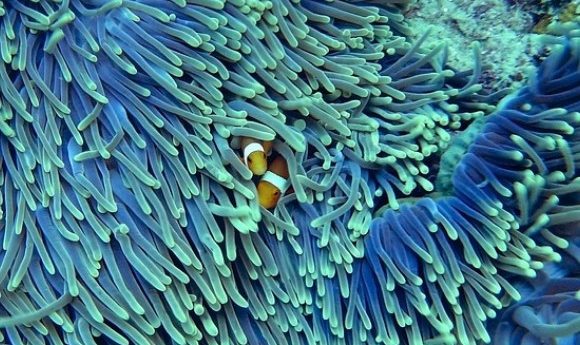Blinding Nemo: monitoring the effect of UV filters on coral reefs

The potential for UV filters to cause coral reef damage has been assessed in the waters surrounding Oahu (HI, USA) in the first study of its kind in the USA.
UV filters, the active ingredients in sunscreen, have recently been scrutinized as the subject of a study into their prevalence in the reefs surrounding the island of Oahu. The study, conducted by a team of researchers from University of Maryland Center for Environmental Science (MD, USA) and led by Carys Mitchelmore, found that while concentrations we not definitively high enough to cause coral reef damage, there were other damaging particulates present that could lead to an accumulative harmful effect.
“Our study vastly expands the current body of scientific data needed to assess the environmental risk of these chemicals to corals. This data can be used in conjunction with future toxicological studies to estimate environmental risk to corals and other species.”
The glaring deficit in information on the prevalence and effect of UV filters on coral reefs inspired the researchers to examine the topic in an attempt to fill in some of the gaps in the literature. Selecting study locations to provide a range of UV filter concentrations, based on the level of municipal, recreational and tourist influence on each area, the team screened for the concentrations of 13 different UV filters present in the sediment, surface water and coral tissue in each location.
Alongside the screen for UV filters, including oxybenzone and octinoxate, and their concentrations, the team also looked for other organic chemicals such as surfactants and synthetic hormones. Noting the significance of the study, the first of its kind in the USA, Mitchelmore stated: “Our study vastly expands the current body of scientific data needed to assess the environmental risk of these chemicals to corals. This data can be used in conjunction with future toxicological studies to estimate environmental risk to corals and other species.”
After analyzing the results of the study, Mitchelmore reported the relatively encouraging news that “the impacts of oxybenzone and octinoxate to intact corals occur at much higher concentrations than this study found in seawater near coral reefs.” However, surfactant degradation products, another potential threat to coral, were found in the seawater, especially around the famed Waikiki Beach. It is not yet clear whether or not the accumulation of several different damaging chemicals at low concentrations could produce a damaging effect on the coral.
The significant number of disparate threats to coral reefs means that there is still a vast amount of work to be done to fully understand the nature and level of threat to the reefs. Highlighting the need for more information, Mitchelmore opined that: “Currently there are only five studies that have looked at the toxicity of oxybenzone and/or octinoxate to corals, so much more research on the toxicity to corals is needed.”





